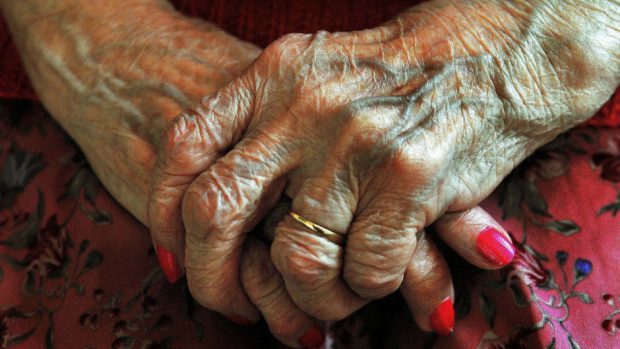Shock new figures have revealed more than 10 “adverse events” happen every day in dementia and geriatric wards across the north of Scotland.
The statistics show there have been a total of 23,499 incidents at facilities in the NHS Grampian and NHS Highland areas over the last six years.
They include falls, assaults on staff, self-harm and patients absconding from secure units.
Scottish Conservative Highlands and Islands MSP Donald Cameron, who obtained the figures, said patients and their families would be “extremely worried” about “the sheer scale” of the incidents.
And charity Age Scotland branded the figures “troubling”.
A spokesman for the Scottish Government said it aimed to “provide high quality care” at “all times”.
But Mr Cameron said: “Patients in dementia and geriatric wards are among the most vulnerable in our hospitals, and deserve the best possible care.
“And there’s no question that wards dealing with dementia patients are incredibly challenging places to work – many of these incidents illustrate that.
“In such environments many of these adverse incidents will have been unavoidable, and it’s a credit to hardworking NHS staff that they deal with these day in, day out.
“But patients in these wards, and their families, will be extremely worried at the sheer scale of these flashpoints.
“There are a significant number of incidents which were put down to staffing shortages, or a lack of adequate resources and training, and that very much falls at the Scottish Government’s door.
“As our population ages and conditions like dementia become more prevalent, it’s clear something needs to be done to ensure these incidents don’t increase.
“We need to see a proper plan to make sure our staff and hospitals are equipped for all the future challenges they face.”
Across the country, a total of 167,041 “adverse” incidents were recorded in the past six years.
Age Scotland chief executive, Keith Robson, said: “What’s important to remember is that these figures do represent some incidents that were not only unavoidable but also that if they had happened in someone’s home would have had far worse outcomes.
“Where this information becomes troubling is when staff shortages and potential public sector cuts are showing themselves as having an impact on the quality of care older people are having whilst in hospital.”
He urged anyone concerned about the care an elderly person is receiving to contact Age Scotland’s helpline on 0800 1244222.
A spokeswoman for NHS Grampian said: “We encourage our staff to record all incidents on the DATIX reporting system.
“We review each one to understand what happened and what we can learn to prevent it happening again.
“Where appropriate we will involve the patient and their family in this process.”
A spokeswoman for NHS Highland said: “We encourage staff to report every incident internally and this information is monitored by local teams and at board level.
“A majority of the incidents reported relate to confused and unwell patients whose perception of the environment and the intentions of staff may be altered and this results in challenging behaviour.”
A Scottish Government spokeswoman said work was being done on a number of measures to tackle adverse events.
She added: “NHS Scotland aims at all times to provide high quality care that is safe.
“But within complex care systems adverse events do occur – and these can range from minor incidents like slips or near-misses to more serious events.
“We expect health boards to use adverse events as an opportunity to learn and improve, to increase the safety of care for everyone.”
